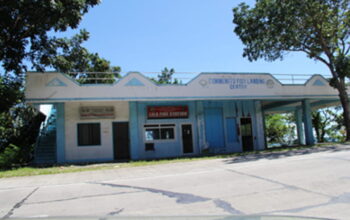
TAGBILARAN CITY, Bohol (PIA)—Spurred by the Provincial Disaster and Risk Reduction Management Council (PDRRMC) recommendation, the Sangguniang Panlalawigan has declared a state of calamity due to the long dry spell experienced all over Bohol, May 21.
The move officially opens the floodgates of government assistance needed to immediately respond to the growing needs and concerns of people and the agricultural sector, something in the vicinity of P178M.
For Bohol, this allows the 5 percent of the revenues from regular sources which has been set aside, to support disaster and risk management activities, as mandated by Section 21 of Republic Act 10121.
Of the 5% of the local revenues, 30 percent is also set aside as Quick Relief Fund as standby fund for relief and recovery programs to normalize the life and situation of the communities affected by the calamity.
In Bohol, the calamity fund runs at 178,278,251.90, of which 53,483,475.57, is designated as QRF, based on the annual budget computations from the Provincial Budget Office.
Bohol Sangguniang Panlalawigan, during its regular session on May 21 presided by Vice Gov. Dionisio Victor Balite, approved the declaration of a state of calamity in the province, which was immediately presented to the Office of Governor Erico Aristotle Aumentado for signature.
The declaration, as recommended by the PDRRMC, was based on the actual damages to agriculture which was submitted by 36 of the 48 local government units.
A declaration of a state of calamity would suffice if 20 percent of its residents are affected and 40 percent of their means of livelihood are affected.
The months of March, April and May have been typically the hottest months in the Philippines, but with the weather conditions exacerbated by the ongoing El Niño phenomenon, to which the state weather bureau forecasted to be lasting until May, the agricultural sector is now feeling the heavy blow.
The El Niño which has increased the dry spell has resulted in drying of water wells, springs and tributaries of major rivers which are critical to the sustenance and survival of livestock.
According to Malinao Dam hydrologist Engr. Aproniano Añora, the regular inflow from Wahig and Pamacsalan which feeds the biggest dam in Bohol is .5 cubic meter per second.
With the El Niño however, the inflow is now reduced to .15 cubic meters per second.
As of May 21, 2024, the Office of the Provincial Agriculturist, through its Officer-In-Charge Larry Pamugas revealed an estimated P420,842,864 damage to agriculture as validated from the towns, due to the heightened dry spell.
Biggest among the damage were crops at P419,653,670.52 in 36 of 48 LGUs.
These were reported in Dauis, Baclayon, Albur, Corella, Sikatuna, Sevilla, Loboc, Dimiao, Valencia, Garcia Hernandez, Jagna, Duero, Guindulman, Candijay, Mabini, Alicia, Pilar, Sierra Bullones, Carmen, Balilihan, Antequera, Maribojoc, Loon, Calape, Catigbian, Tubigon, San Isidro, Clarin, Sagbayan, Danao, Dagohoy, San Miguel, Trinidad, Getafe, Bien Unido, Ubay, and Carlos P. Garcia.
Meanwhile, fisheries sector compiled P756,900 in damages as reported from nine of the 48 towns.
In livestock, damage was reported at P433,294 in seven of 48 LGUs.
To With the cloud seeding seemingly getting snagged in bureaucratic maze
Agricultural damage could worsen as PAGASA projects the El Niño transition by June.
The hot and dry season remains even as El Niño is in its weakened state, Leonard Samar of PAGASA Bohol stated.
The province has been experiencing drought since March with rainfall still below normal this month, he added.
With the declaration of calamity, procurement can be processed with urgency to ensure that interventions are in place especially for affected farmers.
LGUs can also mobilize their respective 30% quick response funds. (PIMO/LMS)



